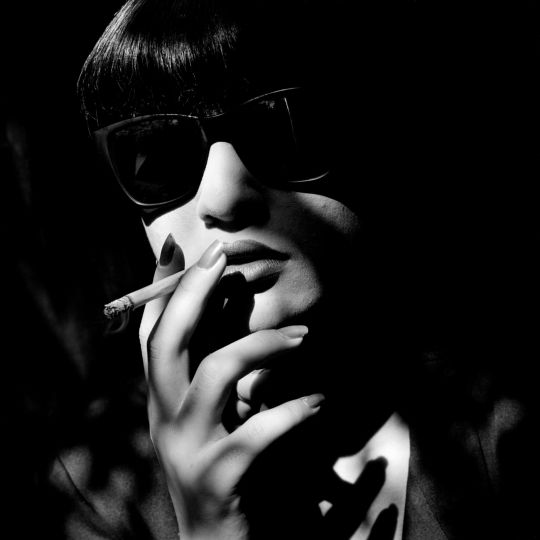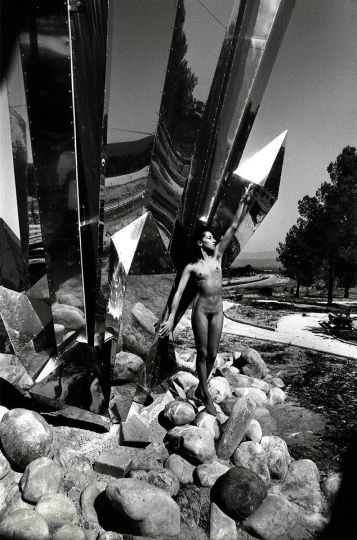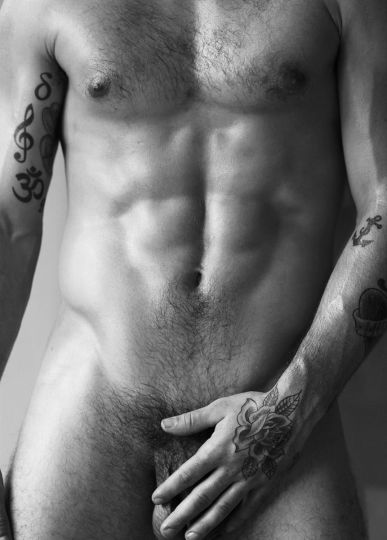Fotografiska New York presents Black Venus, a new exhibition curated by Aindrea Emelife, which examines the historical representation of Black women in visual culture through over 30 contemporary artworks, created between 1975 and today, and a selection of archival imagery dated 1793 to 1930.
The exhibition’s thematic foundation is the Hottentot Venus, a visual-culture archetype named for the assigned stage name of Saartje Baartman (born 1789 in South Africa). Enslaved by Dutch colonizers and toured around Europe as part of a ‘freak show’ due to her non-Western body type, caricatured depictions of her spread around the globe and indelibly catalyzed the Western exoticization and othering of Black women. In BLACK VENUS, archival depictions of Baartman and other historical Black women pair with the vibrant, narrative portraiture by some of today’s most influential Black image-makers whose work deals with layered narratives of Black femininity. Said Emelife, regarding the curatorial decision to combine archival imagery and contemporary artwork:
“Rather than simply putting forth a compelling grouping of contemporary talent, I wanted to establish a legacy. By looking at early images, we identify the beginning of the othering of Black women. In a contemporary age, where Black women are finally being allowed to claim agency over the way their own image is seen, it is important to track how we have reached this moment. In looking through these images, in different stages of history – we are confronted with a mirror of the political and socio-economic understandings of Black women at the time, and what they were allowed to be. The most contemporary examples in the show are unabashed, riotous affronts showcasing all that Black womanhood can be and has always been.” Artists in the exhibition include, in alphabetical order:
- Sadie Barnette (b. 1984, Oakland, CA)
- Widline Cadet (b. 1992, Pétion-Ville, Haiti)
- Shawanda Corbett (b. 1989, New York, NY)
- Renee Cox (b. 1960, Colgate, Jamaica)
- Ayana Jackson (b. 1977, Livingston, NJ)
- Deana Lawson (b. 1979, Rochester, NY)
- Zanele Muholi (b. 1972, Umlazi, South Africa)
- Jenn Nkiru (b. 1987, London, UK)
- Amber Pinkerton (b. 1997, Kingston, Jamaica)
- Tabita Rezaire (b. 1989, Paris, France)
- Coreen Simpson (b. 1942, New York, NY)
- Ming Smith (b. 1950, Detroit, MI)
- Maud Sulter (b. 1960, Glasgow, Scotland; d. 2008, Dumfries, Scotland)
- Kara Walker (b. 1969, Stockton, CA)
- Carrie Mae Weems (b. 1953, Portland, OR)
- Alberta Whittle (b. 1980, Bridgetown, Barbados)
- Carla Williams (b. 1965, Los Angeles, CA)
Several of the works pay direct homage to specific Black women throughout history, bringing posthumous honor to those including but not limited to Saartje Baartman. In HOTT-EN-TOT (1993-1994), Renee Cox explores the exhibition’s titular inspiration by posing as the Hottentot Venus, though looking directly at the viewer rather than posed in the non- confrontational side profile of the historical depictions. In forcing the viewer to lock eyes, Cox gives agency to Baartman by interrupting the centuries-long power dynamic of the objectifying gaze upon her.
Including Baartman, BLACK VENUS recurrently references three visual culture pillars that affected Western perception of the Black female body. The other two are cultural icon Josephine Baker (1906-1975) and a 1793 etching, The Voyage of the Sable Venus, from Angola to the West Indies. The latter was made famous as a featured illustration in a highly circulated 1798 book about the history of the British Colonies, which was authored by amateur historian Bryan Edwards— a British-expat enslaver who owned seven plantations in Jamaica. Among the etching’s countless problems, which catalyzed Emelife’s development of the exhibition, is its abhorrent whitewashing—even glamorization—of the transatlantic slave trade. Using Sandro Botticelli’s famous work The Birth of Venus (1485-1486) as its inspiration, the artist presents a Black woman, the “Sable Venus” (as the artist takes it upon himself to name her), standing on a clam shell, attended to by white cherubs, being towed by a mythical duo of fish harnessed to the reins she is holding. To the left is Triton carrying the British flag and guiding the procession across the ocean, looking up at the woman with apparent desire. As a simultaneous act of fetishization and erasure of the real-life horrors a Black woman would have endured on such a journey, this widely circulated image perpetuated a violently inaccurate narrative among the Western educated class at a time when alternative visual information on the topic would have been scarce and similarly whitewashed.
The show’s third key inspiration, Josephine Baker, factors heavily into the archival material and contemporary work alike. Referred to by BLACK VENUS artist Ming Smith as “one of the most iconic representations of Black female sexuality,” Baker catalyzed a new archetype of Black women in popular culture – the “Jezebel” – when the Midwest- born entertainer moved from New York City to Paris in 1925 to elevate her performing arts career. In New York, Baker’s first publicized role, in The Chocolate Dandies (1924), had her darkening her skin tone with paint and crossing her eyes to make the audience giggle. (A photo of her as this caricatured persona is included in the exhibition, alongside a 1930 glamour shot). In Paris, her performances were still playful and self-deprecating—consciously satirizing her Western audiences’ limited view of Black beauty—but clad in burlesque attire, she became a sex symbol whose body and persona were used to satisfy colonialist sexual fantasies. In reviews of Baker’s most iconic performance (her 1925 French stage debut, La Revue Nègre), she is almost solely described through animalistic metaphors. For Baker, Emelife posits, “self-awareness is used as a tool to challenge race prejudice.” Baker led a fascinatingly multidimensional life; as a civil rights icon and key counterintelligence figure in the French resistance during the Nazi occupation, Baker is the only American-born woman to receive full French military honors at her funeral. Creative figures she personally knew and inspired range from Ernest Hemingway and Pablo Picasso to Mick Jagger and Diana Ross.
As well as heavily featuring in the show’s archival material, Josephine Baker is honored in several of the show’s contemporary artworks, notably Ming Smith’s Me as Josephine (1986). In speaking about the work, Smith poses the idea that “the erotic needs to be understood as a creative power.” By casting herself as Josephine Baker, the perennial embodiment of Black female sexuality, Smith embraces and investigates how Black women’s sexuality has been demonized, perhaps because of its power.
Multiple works in the show build upon contemporary academic discourse by Black women. For Ayana V. Jackson, the work is Dr. Shatema Threadcraft’s 2018 scholarly papers on “the long and still-incomplete path to Black female intimate freedom and equality–a path marked by infanticides, sexual terrorism, race riots, coerced sterilizations, and racially biased child removal policies,” as examined from antebellum slavery through present day. Jackson’s Intimate Justice in the Stolen Moment series offers counterimages to the cruelty described so vividly in Threadcraft’s text. While still grounding her subjects in an historical time period that suggests her subjects are laboring in enslavement or servitude, Jackson presents stolen moments where the nineteenth- and early-twentieth-century Black woman’s body can be found in a state of leisure and repose.
An important aspect of BLACK VENUS is its omnipresent reinforcement that the contemporary Black female experience is not monolithic. For overtly personal works and larger-commentary pieces alike, the lived experience that informs each artist’s explorations of the show’s themes spans cultural and generational contexts while immersing the viewer in distinct zeitgeists. While Amber Pinkerton—the youngest artist in the show—was born in Kingston, Jamaica in 1997, Coreen Simpson, the oldest artist in the show, was born in Brooklyn, New York in 1942. Simpson’s early-1990s images of nude black women in African masks in her Harlem apartment are poignant in their own right but even more interesting in the context of her life at that time; personal narratives remain front-and-center throughout BLACK VENUS.
“By visiting the exhibition and exploring the Black female image from the late-1700s until now,” said Emelife, “viewers are invited to confront the racial and sexual objectification and embodied resistance that make up a significant part of the Black woman’s experience—and to celebrate the current upheaval of this stereotype, at the hands of Black artists. In an age where Black women are taking positions in power, fronting the covers of fashion magazines, and taking up space in all manner of fields and industries, it is a reminder to look back and see how far we’ve come, so we can look to the future. It is a hypervisibility with agency – the Black woman is resilient, powerful, soft, luxurious, queer, disabled, a fashion icon, ethereal, mother, daughter, friend, and lover. BLACK VENUS is a feeling. It is a valiant call to action to be seen and to celebrate in Black women; their aspirations, convictions, contributions and how perceptions of Black womanhood have shifted over time – how agency has been reclaimed. This exhibition is a celebration of Black beauty, an investigation into the many faces of Black femininity and the shaping of Black women in the public conscious – then and now.”
BLACK VENUS was conceived and guest-curated by independent curator Aindrea Emelife, and organized by Amanda Hajjar (Director of Exhibitions, Fotografiska New York) and Terrence Phearse (Exhibitions Manager, Fotografiska New York)
Black Venus
Curated by Aindrea Emelife
13 May – 28 August 2022
Fotografiska New York
281 Park Ave S, New York, NY 10010
https://www.fotografiska.com/nyc/
















